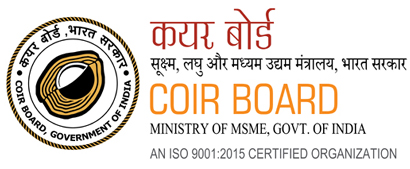History of Coir
The history explains different stories on the birth of the golden fibre.
The first recorded history of coconut in the country dates back to Ramayana period.In the Valmiki Ramayana there are references of coconut in the Kishkindha Kanda and Aranya Kanda. It is reported that Ramayana was written by Valmiki sometimes in 3rd Century BC. Generally it is believed that coconut was introduced in India during the post-Vedic period.
In the Valmiki Ramayana there are references of coconut in the Kishkindha Kanda and Aranya Kanda. It is reported that Ramayana was written by Valmiki sometimes in 3rd Century BC. Generally it is believed that coconut was introduced in India during the post-Vedic period.
References have been made on coconut in Raghuvamsa of Kalidasa and Sangam literatures, which proves the antiquity of the coconut in India. But its origin in India remains disputed. But Marco Polo, the famous Arab traveler who visited India in the 13th Century called coconut “Indian Nut” and the logic for such a reference needs investigation by historians. Shri. P. K. Balakrishnan, a Kerala historian argues that organised coconut cultivation started in Kerala only after the arrival of the Portugese.
Ropes and cordage, made out of coconut fibre have been in use from ancient times. Indian navigators, who sailed the seas to Malaya, Java, China and to the Gulf of Arabia centuries ago, had been using coir as their ship’s cables. Arab writers of the 11 th Century AD referred to the extensive use of coir as ship’s cables, fenders and for rigging. Facts record that there was coir industry in UK before the 2nd half of the 19 th Century. During the year 1840, Captain Widely, in co-operation with Captain Logan and Mr. Thomas Treloar, founded the well-known carpet firms of Treloar and Sons in Ludgate Hill, England for the manufacture of coir into various fabrics suitable for floor coverings.
The coir manufacturing industry producing coir mats, matting and other floor coverings, was started in India on a factory basis, over a hundred years ago when the first factory was set up in Alleppey in 1859 by the Late Mr. James Darragh, an adventurous Irish born American national. Enterprising Indians followed the trail blazed by this foreigner.
Kerala and the Coir Industry
The history of Coir and its association with the state of Kerala dates back to the 19 th Century. Sandwiched between the Western Ghats on the east and the Arabian Sea on the west, Kerala is one of the most beautiful States in India. A tropical paradise of waving coconut palms and wide sandy beaches, this thin strip of coastal territory slopes down from the mountain ghats in a cascade of lush green vegetation and varied fauna. One of the most commonly seen tropical trees in Kerala is the Coconut tree. In fact, even the name Kerala (Kerlam in Malayalam) is derived from this tree (“Kera” in Malayalam language means Coconut and “Alam” means Land, thus Keralam = Land of Coconut). Everything from Kerala’s culture to its dishes is evolved around the Coconut tree.
Alleppey (Alappuzha in Malayalam) is the nerve centre of Kerala’s famous Coir industry. Here, one can see coconut husks being beaten into fibre for making beautiful mats and other coir products. Both men and women are actively involved in the production of Coir. The women are mainly involved in the yarn spinning sector and the men in the product-weaving sector. Coir Industry enjoys the status as the largest Cottage Industry in the State of Kerala, giving employment to over a million people. Kerala also has a very fine natural harbour located at Cochin ( Kochi). From the ancient times itself Cochin had found a place in the minds of Europeans as a trading centre because of its port and spices.
Some of the historical monuments left behind by the early travelers at Cochin are the Chinese fishing nets that were introduced during the medieval ages by traders from the Court of Kublai Khan. St. Francis Church considered as the oldest European church in India was built by the Portuguese sailor Vasco Da Gama during the period 1503 to 1524. The Jew Synagogue built by early Jewish settlers in the period 1568 is another notable historical monument.
| Projects | Tenders | Export Details | Schemes |
| Image Gallery | Videos | Video Tutorials | Contact Us |



